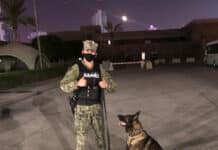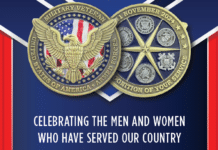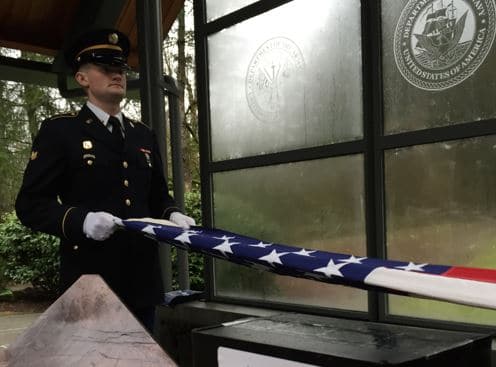by Paul Boardman
The first two bodies I embalmed at my mortuary school class were indigent people who’d died with no next of kin. In order to graduate, we had to embalm ten bodies total before the school year was up. What were these bodies’ stories? Why did they die so alone?
We suited up in Personal Protective Equipment, then swished down the hall together to the refrigerated lockers where the bodies were. The file said I was in the group of five that would handle 80-year-old Evelyn.
We wheeled Evelyn, still in plastic, into the euphemistically-named “prep room.” Katlyn and David, young enough to be my children, assigned me the task of completing the embalming report. I was glad to have paper and pen and fill in the blanks, while they uncovered Evelyn from her plastic shroud. I concentrated on my paperwork, losing myself for a long moment.
All that time, I was in the zone of Evelyn, my senses heightened and concentrating intensely. I had not noticed that less than 10 feet away, the other group of five students were quietly working on Dick. Dick smells emanated past the smeared Mentholatum on my upper lip. I didn’t want to look over. But I did.
Bodies are all so very relative. I was in the Evelyn group—Evelyn who was, well, just a dead woman. Evelyn had bedsores, her mouth was agape, her arthritic legs and hands were gnarled. But Rachael’s group, just 10 feet away, worked on Dick, a Medical Examiner’s autopsy case.
It looked like a grenade had gone off in Dick’s torso and out the back of his skull. Dick’s face was blackened with decomposition. Dick was all decomposition, gangrene, mold, lesions, skin slip and just a bloody putrefied mess. I forced myself to gaze upon Dick. I saw him. I felt grateful to Rachael and the others that she took on Dick. After three hours, it was remarkable how much better both of our cases looked, with us students working on them.
Dick looked better. They sewed his body parts back into his chest cavity and stitched him up. They disinfected him. They went through his thigh into his femoral artery to inject embalming fluid into him. God saw that it was good.
Rachael and I agreed to take charge of memorializing Evelyn and Dick and the other 20-plus bodies our class would embalm. We would ensure a service was performed for each person. To honor them, we needed to find out as much as we could about their lives and stories.
It was our job—one of the seven acts of mercy—to take care of these dead, “our” dead. Whether or not they ever knew it, they gave of their bodies for our training and learning. Evelyn and Dick and the others were ours to take care of. They all had names, which we would say aloud. Their dead faces were imprinted in our hearts and their names would be on our lips. God rest their souls.
Subsequent to Dick’s embalming, we found his military records. He had served in the 1970s in Germany as a paratrooper instructor and was honorably discharged. There was no telling what happened with the downward trajectory of his life, but I suspect mental illness or perhaps alcohol. He died at the bottom. No one to give him a goodbye. We contacted the military to arrange for a free inurnment ceremony for Richard. Ten of us went down to Tahoma to see him off.
We drove in procession to an outdoor shelter where three soldiers in uniform stood at ram-rod attention saluting us, and Dick, of course. All his blackened gruesomeness, his broken-down decomposition, his disheveled life, his gangrene, didn’t matter at that point.
He was being honored for his life contributions. He was saluted for the high point in his life when he trained and assisted other paratroopers to do their duty. I imagined that he was being raised up for when he still walked tall.
A retired, volunteer, old soldier approached the procession of cars. We offered Cheryl as the stand-in widow and matriarch of the family/school. She took the soldier’s arm and he marched her to the center seat, colored blue amidst the rest of the black seats, and sat her down and saluted her. The mortuary school students, the motley crew of us, all sat down around her.
A retired chaplain said prayers. He commended Richard’s spirit to the “Supreme Commander of us all” and assured us that Richard now had the ultimate freedom from his concerns. Yes, I thought, what an idea—that paradise, or heaven, was the ultimate freedom from our concerns—in the case of Richard, a much-needed freedom. “Into your tender mercy do we commit Richard’s spirit.” Poor Richard was in great need of tender mercy.
First, a real six-rifle salute that was absolutely crackingly loud made me jump. Then, the flag-folding ceremony began. Richard’s non-decorative urn was placed on the table in front.
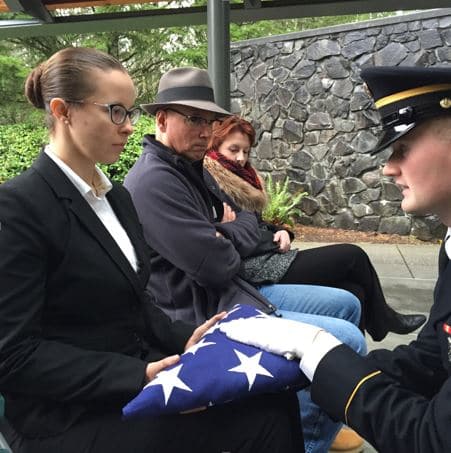
Once the flag was folded, the soldier presented it to Cheryl, our student stand-in widow and matriarch.
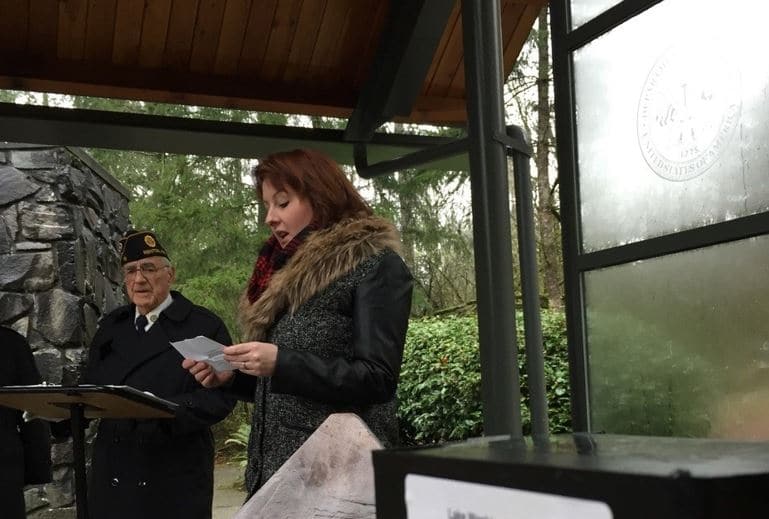
It was a day of last rites and paying respects. Rachael and her team embalmed Richard and dressed him. We’d found out as much about his story as we could. Then we bid him a formal goodbye.
About Author: Paul Boardman is a writer and inter-faith Funeral Chaplain and Celebrant living in Seattle, Washington. He grew up in Tokyo, Japan, and holds the farcically-named “Masters of Divinity” from Princeton Theological Seminary. Two of his enduring thematic obsessions in writing are: what constitutes a good life in the face of death/loss and the nature of yearning, even greed, for love. His work has been featured or is forthcoming in The Good Men Project and ICCFA magazine, and in the anthologies Just a Little More Time, We Came to Say and We Came Back to Say. He is looking to place his memoir.
All content herein is owned by author exclusively. Expressed opinions are NOT necessarily the views of VNR, authors, affiliates, advertisers, sponsors, partners, technicians, or VT Network. Some content may be satirical in nature.
All images within are full responsibility of the author and NOT VNR.
Read Full Policy Notice - Comment Policy

















